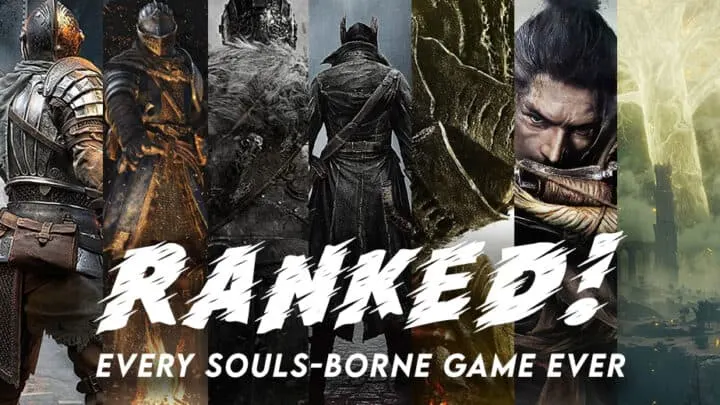With the release of FromSoftware’s seventh Souls-borne experience in Elden Ring, there is finally a cause to rank these amazing games based on the quality of experience they provide. While a few of them are quite different from each other, the core gameplay mechanics and gameplay loop remain the same throughout and as such, it should be quite interesting to see where they stack up against each other.
Here are the things that I looked at and considered when compiling this ranking:
A. Level Design- How intricate and thought-out are the individual areas of the game? Does the design force a player to observe their surroundings and find a viable solution to their problem or does it make them beat their head against a wall looking for a convoluted answer.
B. World Design- Does the atmosphere and tone of the game compel exploration and captivate the player? Do the individual location, asset, and character model designs all work together in unison to make the world feel believable?
C. Boss Design- Do the bosses of the game challenge the player on what they have learned so far while also being enjoyable to fight against? Are the bosses difficult for the right reasons, providing a skill check to the player or introducing a new mechanic that won’t be used for that one single fight alone?
D. Build Variety- Does the game give tools to the player to allow them freedom in how they play it? Is the game balanced in whatever build variety it allows and doesn’t force the average player towards one particular build just to complete the experience?
E. Lore/ Narrative- Is the world filled with expandable lore moments? Does it reward the thoughtful player with opportunities to discover lore without online forums and unnecessarily long searches? Does the over-arching story compel the player to find every connecting thread that they can in its tapestry?
F. Gameplay Systems and Mechanics- Is the moment to moment gameplay enjoyable and interesting? Do the systems of the game allow for a unique and challenging experience without becoming too convoluted for its own good?
With those six things in mind, I have ranked each one of From Soft’s awesome Souls-Borne titles based on my own personal preferences and experiences. How does your list match up with mine? Read on and find out.
7. Dark Souls 2 (2013)
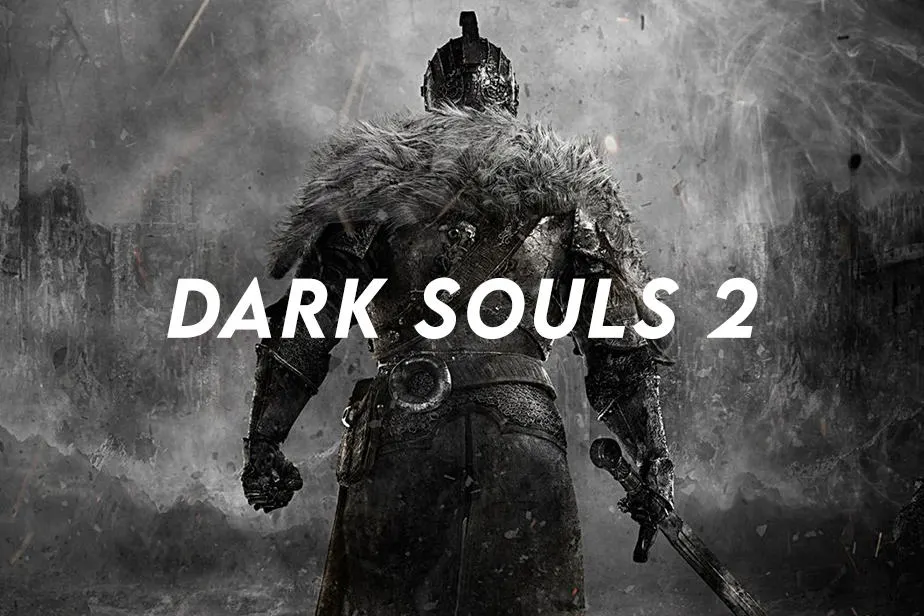
Dark Souls 2 comes in at the bottom of my list, but even with that being said, it is not a bad game. In fact, it is a great game with a lot of very cool moments and memorable gameplay. It just isn’t quite up to the standard that FromSoft has set for itself over the last decade.
This game was made by a development team that had been split away from the main one (to work on another game that we will get to much later) and it shows a bit. Let’s look at why.
Level Design- Coming from the intricate level design of Dark Souls, Dark Souls 2 feels very disconnected and spread out, more in a tradition linear game sense. There are very few moments of true wonder and discovery, and there is little to drive the player forward instead of pulling him along begrudgingly.
World Design- Probably the worst in the series when it comes to a cohesive unit of world design. The areas are hit and miss in their effective immersion and some of the world’s areas don’t even make logical sense in how they add up. There is literally a castle that is positioned above another area in the game, yet not visible from that first area mentioned. It just all feels under-thought and crammed together.
Boss Design- Most of the bosses in this game fall somewhere between boring and frustrating, which is a real shame because a handful of them are genuinely worth playing through the game to face. Even though it boasts the most non-optional boss fights in the series, this game proves that quantity is definetely not always quality.
Build Variety- Almost no real improvement was made in this area in comparison with the original Dark Souls, with nearly every staple weapon and spell returning in the same or slightly different form. Magic spells were slightly diversified and improved, but for the most part the experience remained largely the same.
Lore/ Narrative- Drangleic is full of fun and surprising lore that many Souls players will have enjoyed combing through. It isn’t necessarily as hard to understand or perceive as the other titles on this list, save for Sekiro perhaps, but it is an interesting study of what the story of the first Dark Souls might have been if other choices were made by certain characters.
Gameplay Systems and Mechanics- The gameplay mechanics remain largely the same here from previous titles but they feel a bit slower here for whatever reason. The systems they tried to introduce however is what lands this game here at the bottom, abandoning the thoughtful humanity and bonfire kindling for extra heals and replacing it with slow Estus Flask usage, unlimited minor healing items, and a health-bar that is slowly chipped away as you inevitably die.
Overall Score: 8.8 out of 10
6. Demon’s Souls (2009)

As the oldest game of the bunch, it only makes sense that it would be pretty rough around the edges when viewed in comparison to its younger siblings. Many of the foundational mechanics of the Souls series can be found here though, a testament to how well thought out they were for this game.
Demon’s Souls possesses some of the most iconic moments in these games, but it also has quite a bit of boring and frustrating gameplay to wade through to get there sometimes. Let’s look at why.
Level Design- From Software’s now iconic take on linear level design is present here but clearly not quite polished in execution. Path wrap around and reconnect and locked doors or blocked roads sometimes require outside the box thinking to circumvent, but none of it ever results in the amazement factor of their followup in Dark Souls. Save for a particular swampy area, now a staple of Souls experiences, each level is a lot of fun to explore to its fullest and overall a positive factor for the title.
World Design- Each of the areas of the game and their fairly small assortment of enemies feel pretty stereotypical for gaming in general and do little to break any kind of mold that you might expect to see. They aren’t bad at all, but just like the level design of the game, there was much better world design right around the corner
Boss Design- The bosses of Demons Souls are pretty hit or miss for me, with most of them landing on the “miss” side of things. There are a few notable standouts in design like the Tower Knight and Old Hero encounters, but most of them fall into the “easy to exploit” or “hard for all the wrong reasons” categories, especially on NG+.
Build Variety- As the first entry in the series, the build variety here is maybe more than you would expect, but nowhere near the heights of the later titles. Very few special or unique weapons exist to build around and buffing/ defensive spells are bare bones. Armor does not carry any special abilities or buffs to speak of either, making equipment selection nearly exclusively based around its weight.
Lore/ Narrative- Demons Souls lore is pretty straightforward and easy to understand for even those not paying super close attention. However, there are in fact many side stories and branching narratives involving the side NPCs of the game that require a bit more digging and consideration, a feature that I am sure many blew right by playing this game or at the very least on their first playthrough. This template is an excellent way to present a complex story and would be repeated many times in the future.
Gameplay Systems and Mechanics- While the gameplay feels incredibly simple by comparison with any of the other titles on this list, it also felt pretty polished when compared tot he same standard. Where Dark Souls felt slow and clunky, this game felt mostly slow and smooth to me. The core combat loop is satisfying enough for most of the game and using items is just as easy as any other game here.
Where the game misses the mark for me is in its unexplained systems, like character and world tendencies. While these ideas are compelling, the game’s lack of explanation was a major detriment to them, where it normally would be a strength.
Overall Score: 8.9 out of 10
5. Sekiro: Shadows Die Twice (2019)
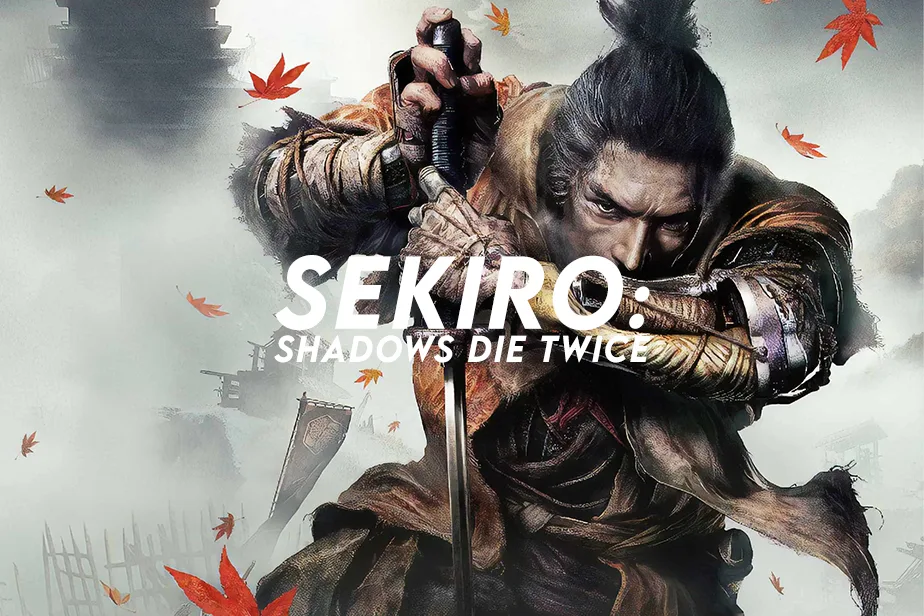
Some readers will be shocked to see Sekiro: Shadows Die Twice so low on my list but it is not an indictment against this game but rather a praise of the ones to come. Sekiro is a phenomenal, mind-blowing experience that has very few flaws and proudly wears its influences on its sleeve while also carving a new path for more single-player focused experiences out of From Soft.
The moment to moment gameplay is top notch and might be considered the best in the series but a handful of very minor complaints keep it from being elevated any further. Let’s look at why.
Level Design– Perhaps the most straightforward and linear level design in the series belongs to Sekiro. There are only a handful of true interconnected routes and paths with most of the game featuring a “hub and spokes” system of area placement. This is only one of the many ways that this game strayed from the traditional formula, and to me it is neither a positive or a negative, just simply different.
World Design– The world of Sekiro is beautiful and immersive, but to me it felt a tad bit underwhelming in scope when compared to its companions. There are many interesting takes on classic video game tropes, but ultimately they were just that. Definetely From Soft’s least original world to date, even bearing the vanilla nature of Dark Souls 2.
Boss Design– Where Sekiro strays immensely from previous Souls games is in its boss design. Bosses in this game are meant to push the players reflexes and abilities to new heights, whereas in Dark Souls bosses provided a “show me what you have learned” approach. Players are meant to constantly be on the offensive and much like in Bloodborne, keep the pressure on throughout the entire fight to maximize your chances of success.
Build Variety– As the only game in the series to be a full-fledged action game with RPG elements versus the typical true RPG they normally are, this particular game lacks build variety of any kind. The only major difference from one players experience to another is the selection of prosthetic tools available in combat and the use of certain helpful items. No armor choices. No weight penalties. No weapon options. Just the tools the game gives you and the challenges to face, for better and for worse.
Lore/ Narrative– Although the story of Sekiro is extremely easy to follow and understand for even the most casual From Software fan, it is probably my least favorite in the series because of it. Aside from one very particular twist at about the three-quarter mark, the story is pretty devoid of any true captivating moments. Even then, the twist makes little to no sense in the story as a whole, even when analyzing the tiny tidbits of lore that can be found in hidden places.
Gameplay Systems and Mechanics– The combat of Sekiro is the driving force of the game, making the player adhere to strict timings and strategies to overcome its brutal challenge. At times it feels as though the game was specifically designed to punish the typical Souls player, as defensive strategies almost always end in ruin.
The player must always be on the attack when it is possible to do so, forcing up close and personal confrontations versus the “hang back and wait for openings” of games that came before. It is an interseting shake-up that works well for the most part.
Overall Score: 9.5 out of 10
4. Dark Souls (2011)
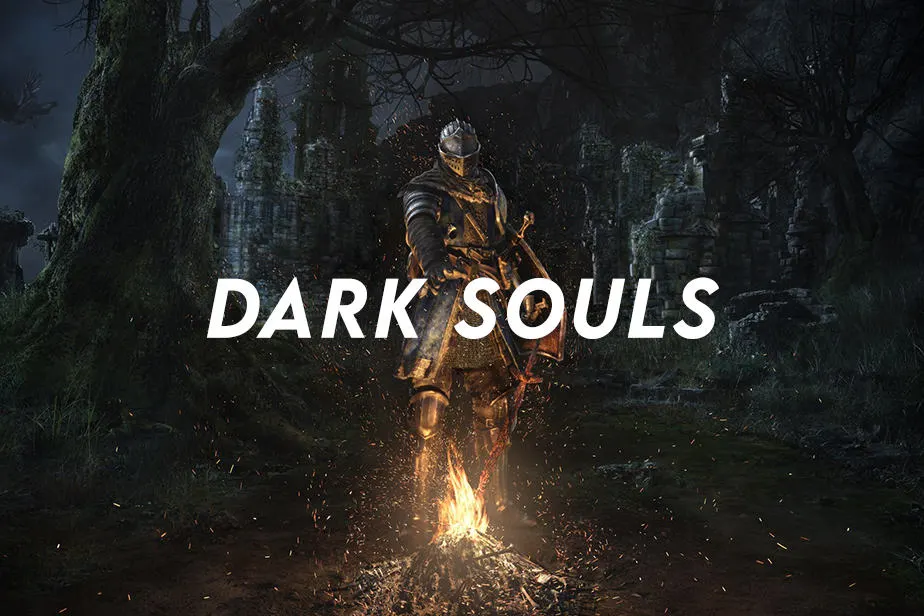
While Demon’s Souls was a great game in its own right, this is the game that put From Software on the map for most players. It is an incredible experience that I would encourage every gamer, casual or not, to give a serious try as it is extremely unique and mysteriously captivating.
That being said, it is also only the second game in the anthology and its age shows up in a lot of ways today. It may be a masterpiece, but it holds that title in spite of its flaws, not because it doesn’t have any. Let’s look at why.
Level Design– Dark Souls is a masterclass in how to create a world that appears simple but slowly unfolds into something far more complex and intricate. The way that most paths double back and connect to previous areas and the way that certain new areas are revealed to the player is nothing short of astounding at times. If I could pick one video game out of the hundreds I have played to wipe all memory of and experience again afresh and anew it would be Dark Souls without question.
World Design– While many areas of the game feel like just checking the boxes of typical areas you would find, (swamps, lava, forests, castles, etc.) there are quite a few standout areas and enemy designs that cannot be accurately be described without actually sitting down and playing the game. The thoughtfulness on display here when traversing the land of Lordran is near perfection in motion.
Boss Design– Featuring not just some of the best and most iconic boss fights of not just the series, but of ALL TIME, the bosses of Dark Souls are almost all notorious for some reason or another. While there are still quite a few stinkers in the midst (we are looking at you, Bed of Chaos!), most of the fights are enjoyable and balanced well. Lovers of great boss fights need look no further.
Build Variety– There is a stark improvement over Dark Soul’s predecessor in Demons Souls when it comes to build variety. With nearly four times as many weapon and armor choices for the player to comb through and discover, the game encourages multiple playthroughs and further exploration into NG+ to see its full roster of play-styles and combat options.
Lore/ Narrative– Dark Souls lore is iconic for its open interpretations of even the most critical lore facts in its narrative. The player is left to discover who they are, what their purpose is, how things came to be the way they are, and what choice they should ultimately make in the end. Much like the gameplay itself, Dark Souls story refuses to hold your hand and rewards the player with either A. an abundance of patience and sleuthing skills or B. an internet connection and a quick Youtube search.
Gameplay Systems and Mechanics– By comparison with almost all of the other titles in this list, Dark Souls combat is extremely slow and best defined by the word “clunky”. First time players may find the combat difficult and unforgiving, but coming back to this game after smooth experiences like Sekiro and Elden Ring made me feel like I was playing in slow motion half the time. This is where this game shows its age, and unfortunately, its a huge part of what this game actually is: an old one.
Overall Score: 9.6 out of 10
3. Elden Ring (2022)
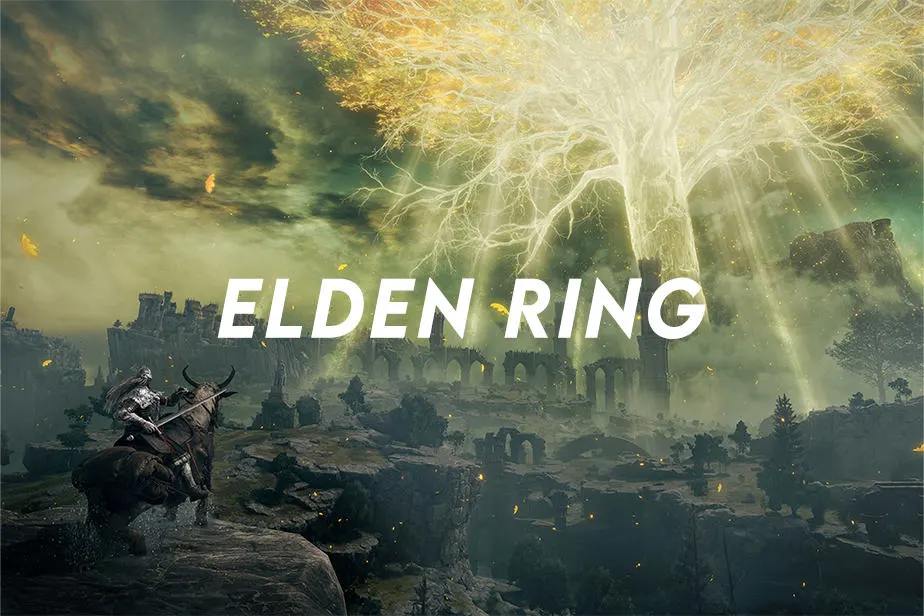
Elden Ring is From Software’s most recent foray in the series and it is an incredible one at that. Its open world design is among the very best playable areas in all of gaming and its early game pacing is very near addicting levels of compelling.
It stumbles a bit in the endgame in my opinion with pacing, lackluster final areas, and a mixed quality in boss selection, but overall this game is still a massive triumph that deserves its bronze medal spot here on this list. Let’s look at why.
Level Design- There are several sections of Elden Ring that are more enclosed areas apart from the open-world nature of the rest of the map. Most of these areas are absolutely stunning, from the lavas of Mt. Gelmir’s Volcano Manor to the decadent halls of Raya Lucaria, they compel the player forward and have excellent enemy designs and environments.
That being said, there are also quite a few copy and paste dungeons that begin to feel tedious before you ever even leave Limgrave. Luckily the amount of these taper off as the game goes on, keeping the focus on the larger and more interesting levels of the game.
World Design- Far and away the best in the series, just play it for yourself and you will see why in a matter of moments. The world is lush and full of explorable areas, but also leads the player in natural and unique ways to their next destinations.
Boss Design- While most of the bosses of Elden Ring can be held in high regard, the open world nature of this title allows for many of the bosses to be played out of their recommended order giving many bosses a controversial view in their difficulty. This game has just about as many well balanced bosses as I believe is possible considering the game’s sheer scope.
Build Variety- Once again this game is far and away the most diverse when it comes to build variety. The new Ashes of War system should definetely be here to stay as it allowed nearly endless combinations of play-styles for both PvP and online play.
Lore/ Narrative- The lore of Elden Ring could probably be described as cryptic but not nearly as much as its Dark Souls cousins, which is not necessarily a bad thing. There are enough hidden meanings and lore tidbits to keep diehard fans happy while keeping the main story front and center for those who really don’t care about that, much like Dark Souls 2.
Gameplay Systems and Mechanics- Coming back to a bit more wide open combat system from Sekiro’s more tightly focused combat felt a bit off at first but I was quickly back to my “Dark Souls” form when it came to dispatching the enemies in the Lands Between. It’s tried and true but not all that revolutionary.
Overall Score: 9.7 out of 10
2. Dark Souls 3 (2016)
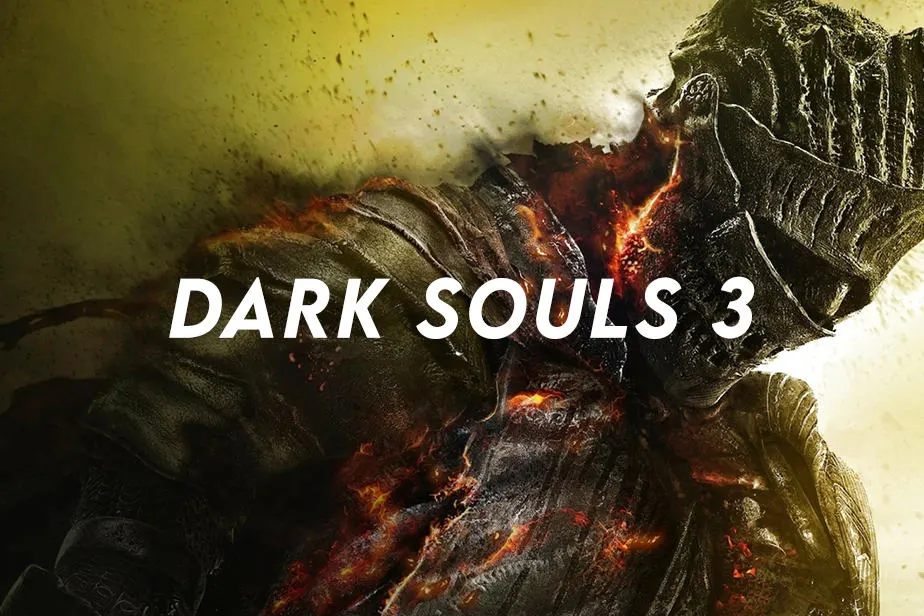
Dark Souls 3 may initially appear to be made purely for fan service and the nostalgia of the original but upon deeper inspection it is actually a whole lot more. It isn’t just a love letter to Dark Souls fans, it is the best iteration of what makes these games so incredible.
Save for a handful of level design and boss design issues, this game is nearly perfect as it is. Boasting a huge number of incredible boss fights and featuring some of the most balanced and well-paced gameplay that you can find. Dark Souls 3 will always hold a special place in my heart as the game that officially hooked me on Souls-Borne. Let’s look at why.
Level Design- While many of Dark Souls 3’s areas feel a bit uninspired and done before, there is also a strange uniqueness that most areas have that makes them feel all their own, much like the original Dark Souls was also able to accomplish. I think I can best describe it as uneasiness in familiarity, never knowing when a new surprise would be right around the corner.
World Design- The layout of the world actually feels very similar to Dark Souls 2 except for the connection of the hub world to the rest of the areas. Although the world still unfolds in a branching pattern as opposed to the originals interconnected paths, it is done to much better effect her and is far more believable than any part of Dark Souls 2.
Boss Design- The absolute best in the series by far, the boss catalog here simply cannot be missed, as even the ones that don’t stand out are not bad bosses per say. Dark Souls 3 gets right more than any other the key component of what makes the the Soulsborne series so incredibly special, the boss fights.
Build Variety- Dark Souls 3 really upped the game for interesting and creative builds by adding in weapon arts system that opened things up for combinations.
No longer did a player have to pick one play-style and lean heavily into it to succeed, but rather he could play around with various stats and always end up with a build that was competitive with where he was in the game. A lot more freedom and a lot more fun.
Lore/ Narrative- This is where Dark Souls 3 really falls flat for me as a fan as the story is essentially a reimagined telling of the exact same story in the original Dark Souls. While that is a bit of an oversimplification, the compelling nature found in most of these games to uncover the secrets and learn all the hidden truths just wasn’t there for me this time.
Gameplay Systems and Mechanics- The combat took a lot of the great things that were crafted and experimented with in Bloodborne and mixed it in with the more heavy RPG style swordplay that we had grown accustomed to before and the result was amazing.
It gave us a quicker, more fluid gameplay style that escalated boss fights and PvP alike into something quite special. My heart goes out to fans that weren’t able to experience these small quality of life changes as they came to us.
Overall Score: 9.8 out of 10
1. Bloodborne (2015)
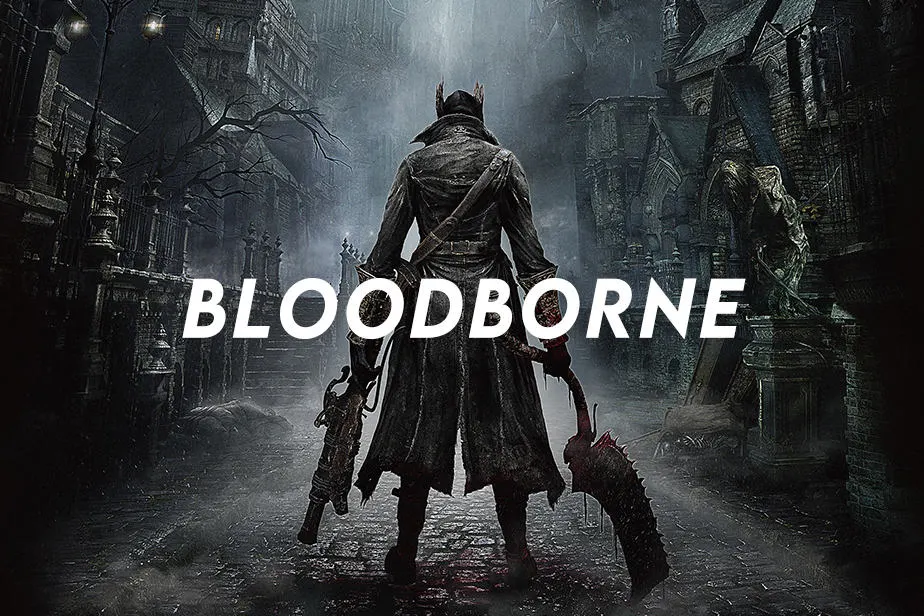
Bloodborne is quite simply put, a masterpiece. Upon playing each one of these games through back to back, this was the only experience that I didn’t bother to put down any gripes about. That isn’t to say that there aren’t any, I just see every “flaw” I find in the game to simply be me not understanding the director’s vision for it. (AKA It’s not JUST LIKE Dark Souls lol)
The atmosphere is incredible, the lore is fantastic, the music is fitting and never detracts, the boss fights are nearly all enjoyable in some form or fashion, and the moment to moment combat is always exciting even if you never change your starting weapon!
While the B team was working on Dark Souls 2, Miyazaki and the rest of his development team tackled this hugely ambitious project! Bloodborne is not just the best Souls-Borne game, in my opinion, it is one of the greatest games of all time. Let’s look at why.
Level Design- From the very beginning the layout and design of Bloodborne’s individual areas stand out to you in some impressive ways like the way the streets of Central Yharnam seem to seamlessly flow you toward your objectives without you even realizing the journey you are being taken on. The enemy placements are also the best in the series, keeping you on your toes at all times without ever feeling cheap or underhanded.
World Design- There really isn’t anything quite like Bloodborne in this series when it comes to the immersive atmosphere and iconic imagery that it provides. From Cathedral Ward to the Fishing Hamlet, the game continues to delight in its imagery even though it isn’t as diverse necessarily as the games that have followed since.
Boss Design- Those who have read my article ranking all of the bosses of the Soulsborne series will know that there is a special place in my heart for the later game and DLC bosses that From Soft gave us with this game. They are balanced to perfection and equally fun when it comes to learning their moves and their lore alike.
Build Variety- While many will say that this game lacks true build variety, with most of the weapons encouraging an “in your face” play-style, it is finely crafted and purposeful, much like the experience we got with Sekiro that would come to us later.
Lore/ Narrative- It may not be the deepest lore, but it is the most moving and compelling piece of storytelling that From Soft has ever created and it isn’t even close. From the cosmic tale of a Pthumerian queen to the creation of the Hunters, there is no piece of lore from this amazing world that the average player would not stop and invest time in.
Gameplay Systems and Mechanics- The massive increase in combat tempo is a change that has been present in every From Soft game since, abandoning the clunky more RPG style combat of the first three titles and branching out into new territory to great success. It was the first game in the series to feature encounters that consistently felt fair because of your own ability to make them that way.
Overall Score: 10 out of 10

